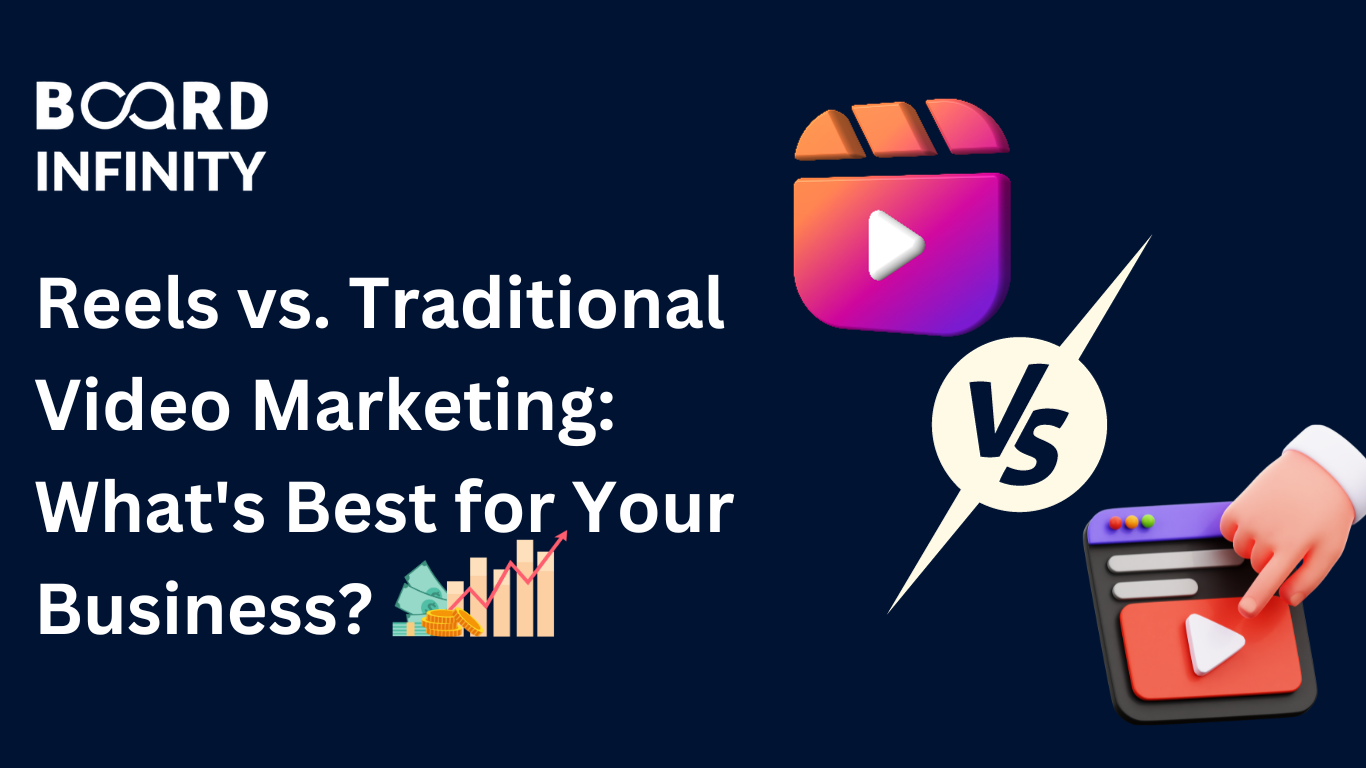
Reels vs. Traditional Video Marketing: What's Best for Your Business? In the dynamic world of digital marketing, the evolution of video content has been nothing short of revolutionary. As a business owner or marketer, you’re constantly faced with choices about how to allocate your resources for the most effective marketing strategy. In recent years, the rise of short-form video content, particularly 'Reels', has become a topic of much discussion. This begs the question: Should businesses focus on Reels or stick with traditional video marketing? Let’s dive deep into this topic.
Introduction to the World of Video Marketing
Before we compare Reels and traditional video marketing, let’s understand their basics. Traditional video marketing often involves longer-form content, usually over a minute in length. This kind of content is typically hosted on platforms like YouTube, websites, and sometimes on television. It’s great for storytelling, providing detailed information, and building brand identity. On the other hand, Reels – initially popularized by Instagram and now a feature on several social media platforms – are short, engaging videos usually lasting 15 to 30 seconds. They are quick, catchy, and designed to hook the viewer immediately.
1. Understanding the Power of Reels
Reels have surged in popularity for several reasons. They cater to the decreasing attention spans of digital audiences, making it easier to engage users who prefer quick and concise content. The algorithm of platforms like Instagram also favors Reels, often giving them more organic reach than traditional posts. For businesses, this means potentially more exposure without the additional advertising costs.
Another advantage of Reels is their viral potential. The use of trending audio, creative editing, and relatable content can help a reel go viral, thereby significantly increasing brand visibility.
2. The Enduring Value of Traditional Video Marketing
Traditional video marketing, while seemingly less trendy, holds substantial value. Long-form videos allow for in-depth storytelling, which can be crucial for certain products or services. They also enable businesses to convey their brand message more comprehensively and build a stronger emotional connection with the audience.
Platforms like YouTube also have immense SEO benefits, as they are often used as search engines themselves. Detailed videos hosted here can drive substantial traffic to your website, aiding in higher search engine rankings.
3. Target Audience and Platform Considerations
Choosing between Reels and traditional video marketing largely depends on your target audience and where they spend their time. Younger demographics tend to gravitate towards quick, engaging Reels on platforms like Instagram and TikTok. If your target audience includes Gen Z or younger Millennials, Reels might be the way to go.
Conversely, if your audience prefers detailed information or if your product/service requires a more in-depth explanation, traditional video marketing might be more effective. Platforms like YouTube are frequented by a broader age group and often cater to audiences seeking comprehensive content.
4. Cost and Production Time
Producing Reels can be less costly and time-consuming. With a smartphone and basic editing skills, you can create engaging Reels. This makes them an attractive option for small businesses or marketers with limited budgets.
Traditional videos often require more resources, including professional equipment, editing software, and sometimes a production team. This can translate into higher costs and longer production times.
5. Flexibility and Creativity in Content
Reels offer tremendous creative freedom in a compact format. The challenge is to convey your message or showcase your product creatively and engagingly within a short time. This format encourages experimenting with different styles, effects, and storytelling techniques. There are numerous platforms offering Reels, such as YouTube Reels and Facebook Reels, but Instagram Reels stand out as exceptionally popular.
Leveraging the immense potential for video marketing on Instagram Reels is a smart move. To enhance your Instagram Reels experience, consider using an Instagram Reels maker tool. It provides advanced features like pre-made templates and customization options, including transitions, effects, filters, text boxes, and more, ensuring your content is both creative and unique.
Traditional video marketing, while not as constrained by time, requires a structured approach to content creation. It often follows a storyboard and is planned in detail to ensure the message is delivered effectively.
6. Measuring Success: Engagement and Conversion
With Reels, success is often measured by the level of engagement – likes, shares, comments, and the number of views. This engagement can be a powerful metric for brand awareness and audience growth.
In traditional video marketing, the focus might be more on conversion rates and the direct impact on sales or leads. The analytics provided by platforms hosting traditional videos can offer in-depth insights into viewer behavior and preferences.
7. Integration into Overall Marketing Strategy
Reels can be a fun and innovative addition to your marketing mix, offering a fresh way to engage with your audience. However, relying solely on Reels can be limiting, as it’s just one part of a comprehensive digital marketing strategy.
Traditional video marketing, with its detailed content, can form the backbone of your digital presence, offering substantial content that can be repurposed across various channels.
Conclusion: Balancing Reels and Traditional Video Marketing
In conclusion, both Reels and traditional video marketing have their unique strengths and can be valuable parts of your social media marketing strategy. The choice depends on your business goals, target audience, and resources.
For maximum impact, consider a balanced approach. Use Reels for quick, engaging content to attract and grow your audience, and traditional videos for in-depth storytelling and building a lasting connection with your viewers. By leveraging the strengths of both formats, you can create a comprehensive video marketing or content marketing strategy that effectively propels your business forward in the digital age.
This strategy ensures you’re not putting all your eggs in one basket and allows you to adapt as trends and audience preferences evolve. Remember, the key to successful video marketing, in any form, lies in understanding your audience and delivering content that resonates with them.
